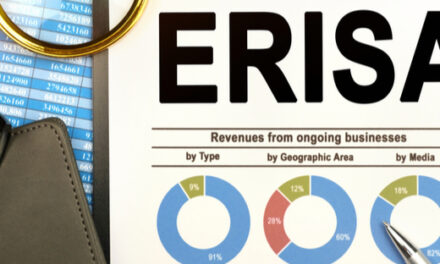
Revisiting the Sequence of Returns Risk
The sequence of returns risk may be the greatest risk facing retirees. The danger of down markets occurring near to or early in retirement, coupled with withdrawals to fund retirement spending, can be lethal to the longevity of an individual’s retirement savings.
To view the full article please register below:
Revisiting the Sequence of Returns Risk
Any advisor knows the sequence of returns risk may be the greatest risk facing retirees. The danger of down markets occurring near to or early in retirement, coupled with withdrawals to fund retirement spending, can be lethal to the longevity of an individual’s retirement savings.
In a paper published to the Retirement Management Journal, “Sequence of Returns Risk Reconsidered,” the authors argue that the sequence risk is much broader than just investment returns and exists throughout retirement, not just in the early years.
Sequence risk, in addition to the distribution and sequence of future returns, involves a range of variables whose distribution and sequence can materially impact the probability of assets to meet future liabilities. These risks include inflation, retirement consumption, future annuity costs, health, and longevity.
For instance, retirement consumption may experience a sharp unexpected rise in later years (e.g., retrofitting a home for physical disabilities), while longevity may jump thanks to a newfound cure for a disease. So, whether it’s an unanticipated spike in spending or an increase in lifespan, each occurrence serves to place greater strain on remaining assets, and this strain will be more profound during the latter phase of retirement.
Managing the Sequence Risk
The sequence risk can be managed through a metric the authors call the “actuarial coverage ratio” (ACR), which encompasses retirement savings and liabilities, and is tracked and adjusted throughout retirement. Because retirement inputs can change with the passage of time (e.g., the longer a client lives, the longer his or her life expectancy), the asset-liability analysis needs to be performed on a regular, periodic basis.
Another way to manage the sequence risk is through withdrawal strategies. The authors outline two approaches that might help. One is a hybrid withdrawal strategy that is comprised of a fixed withdrawal amount equal to 50 percent of the desired income target and a variable withdrawal amount based on the initial portfolio withdrawal rate needed to meet the other half of the targeted retirement income goal. For example, if a client has a monthly income goal of $10,000, then $5,000 would be paid out on a fixed and continuing inflation-adjusted basis. To fund the other half, an advisor would calculate the percentage portfolio withdrawal rate required to meet the other half of the desired income target ($5,000). If, for instance, it comes to a 2.5 percent rate, then future withdrawals would be equal to 2.5 percent of the then-current portfolio value, even during times of lower portfolio values.
Interesting and useful research on strategies to optimally manage retirement income continues to be produced and this paper adds nicely to that expanding library.
Please reference disclosures: https://blog-dev.americanportfolios.com/disclosures/












